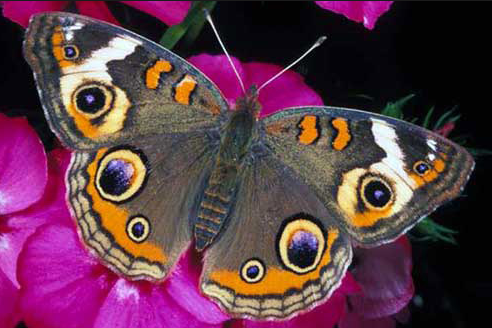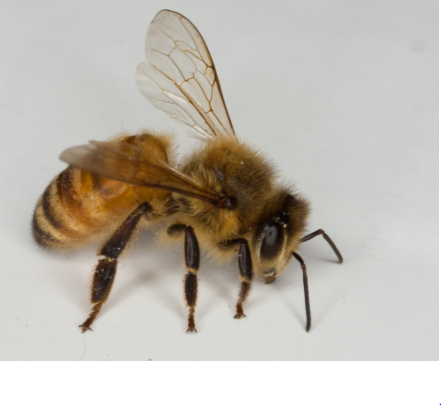Paper Wasps

Paper wasps in the Cayman Islands are recognizable for their distinctive appearance and notable ecological roles. These social insects are typically slender with a distinct waist and varying color patterns, often featuring combinations of yellow, black, and brown. They construct intricate nests from chewed wood fibers, giving them the name “paper wasps.” Inhabitants of a variety of environments, including gardens, woodlands, and urban areas, paper wasps often create their nests in sheltered locations, such as eaves or branches. Their diet primarily consists of nectar and sugary substances, while they also play an important role as predators of small insects and caterpillars, contributing to natural pest control. As pollinators and predators, paper wasps fulfill a vital niche in the ecosystem, influencing both plant pollination and insect population dynamics in the Cayman Islands.
Buckeye Butterfly

The Buckeye Butterfly (Junonia coenia) is a distinctive and captivating species found in the Cayman Islands. Known for its striking appearance, this butterfly features intricate patterns on its wings, with prominent eyespots resembling the eyes of a deer or buck. Its wings are usually shades of brown with orange, black, and white markings. These butterflies can be found in a variety of habitats, including open fields, gardens, and meadows. Their diet primarily consists of nectar from various flowers, making them important pollinators in their ecosystem. The Buckeye Butterfly’s niche extends to both pollination and being prey for insectivorous animals, playing a role in the food web. Their unique markings not only serve as camouflage but also deter potential predators. The presence of the Buckeye Butterfly contributes to the vibrant biodiversity and ecological balance of the Cayman Islands.
Western Honey Bee

The Western Honey Bee (Apis mellifera), commonly known for its vital role in pollination and honey production, can also be found in the Cayman Islands. Recognizable by its distinctive black and yellow striped abdomen, the Western Honey Bee is a social insect that lives in organized colonies with a division of labor. These bees are adaptable and can thrive in a variety of habitats, including gardens, forests, and urban areas. Their diet consists primarily of nectar collected from flowers, which they transform into honey through a complex process. Beyond honey production, these bees play a crucial role in pollinating various plants, enhancing fruit and seed production. In their niche as pollinators, Western Honey Bees contribute significantly to the reproductive success of numerous plant species in the Cayman Islands, ultimately supporting local ecosystems and agricultural practices. The Western Honey Bee displays eusocial behavior, with a queen, worker bees, and drones fulfilling distinct roles in the colony. This complex social structure involves cooperative care, overlapping generations, and division of reproductive labor, contributing to their success as pollinators and honey producers.